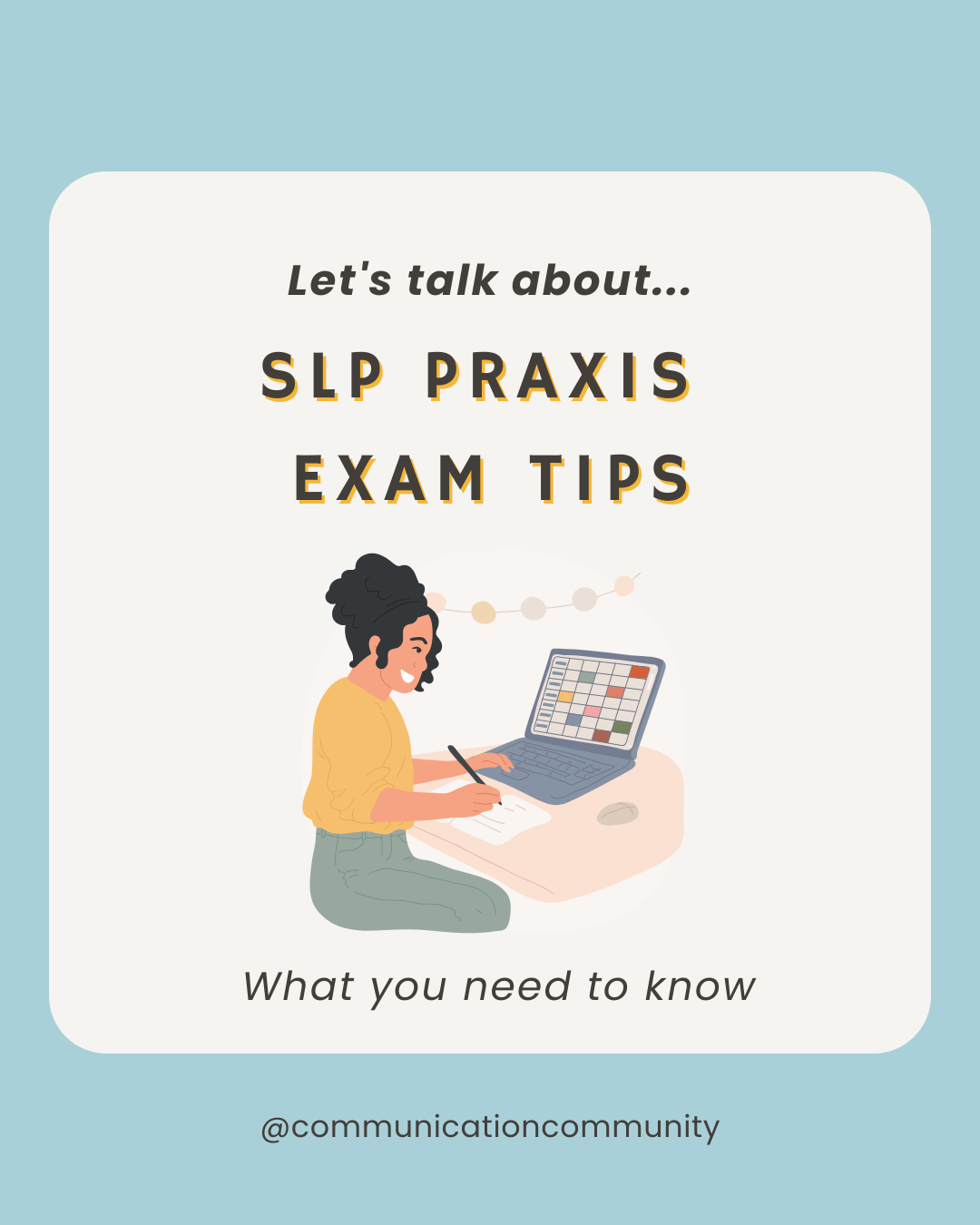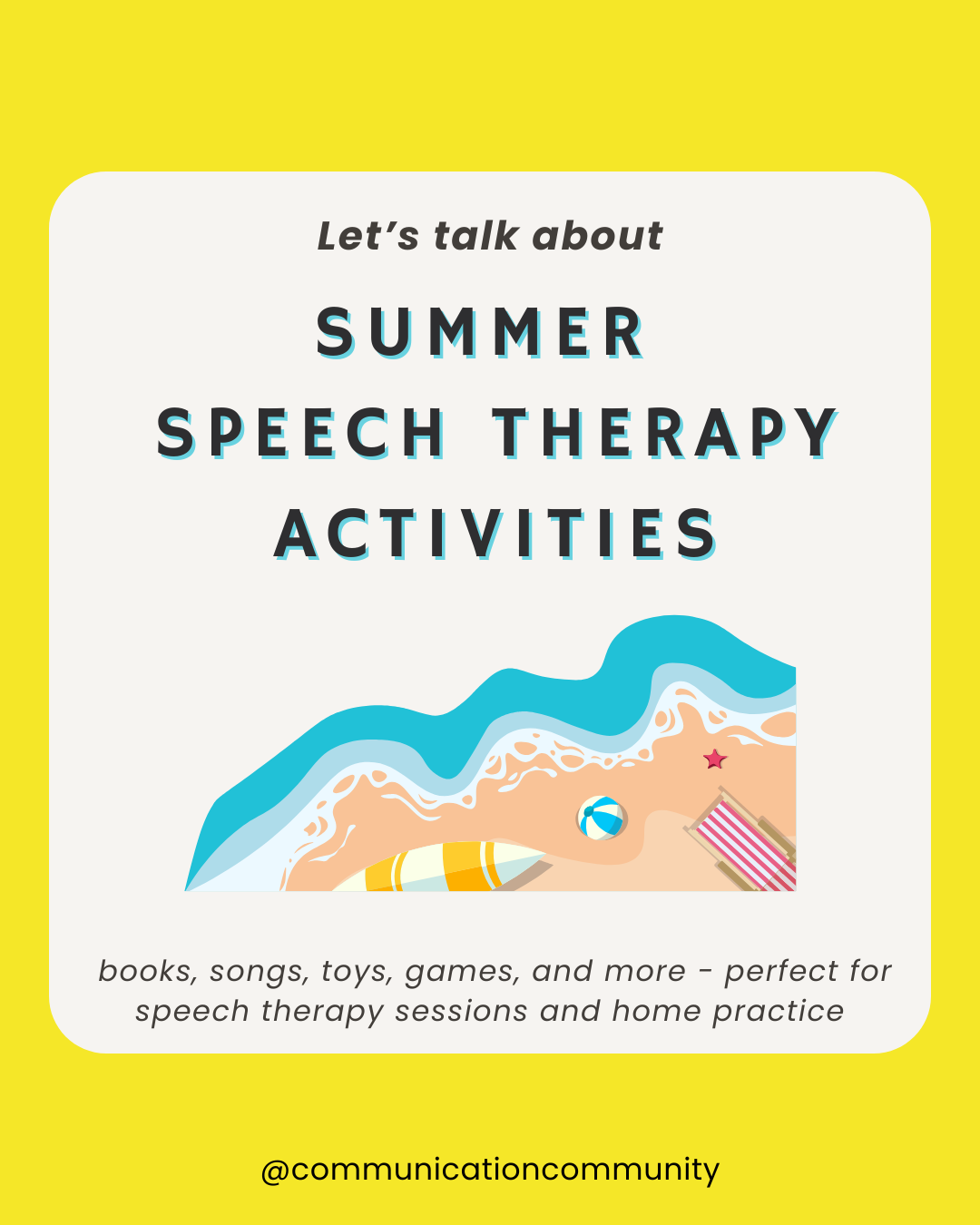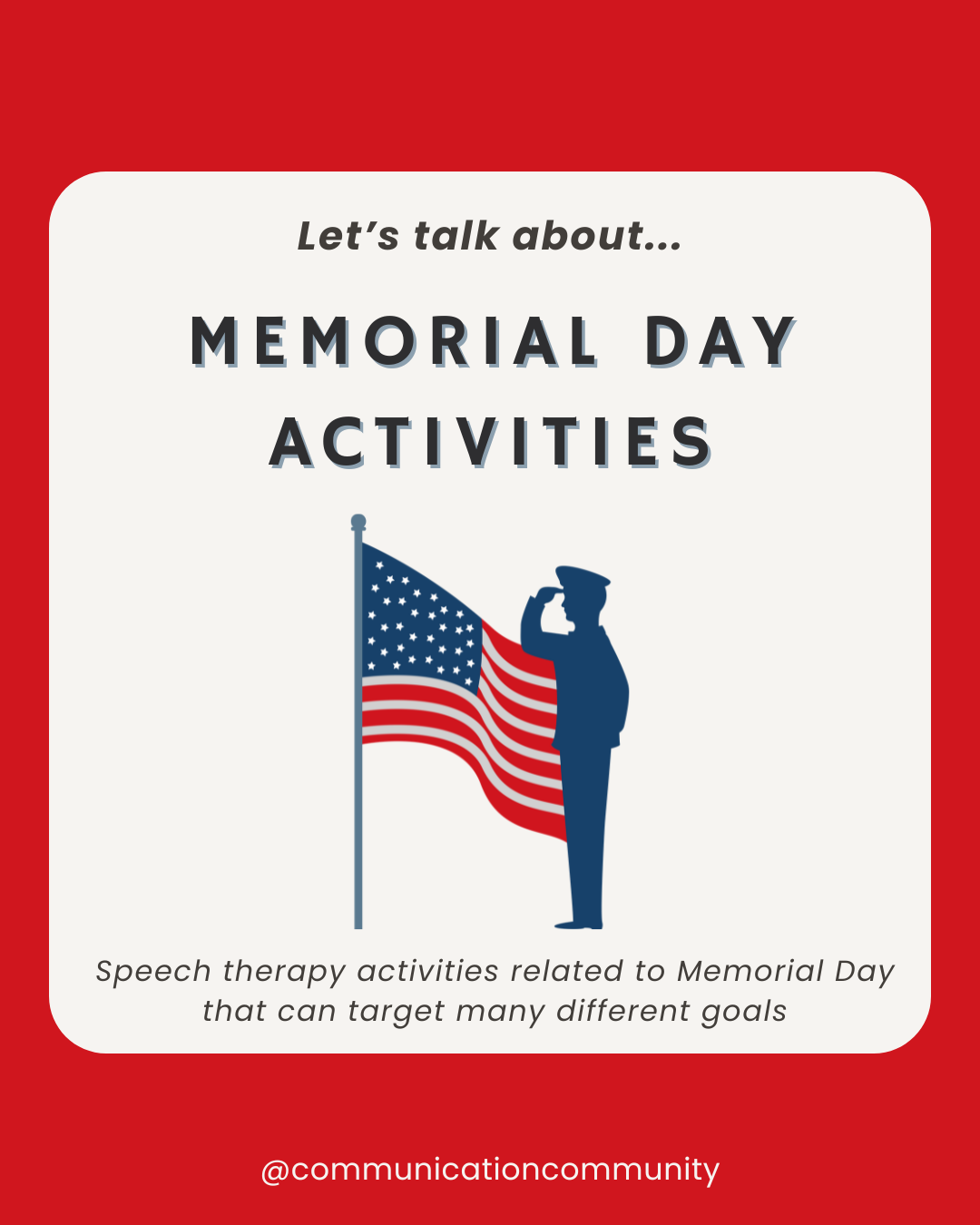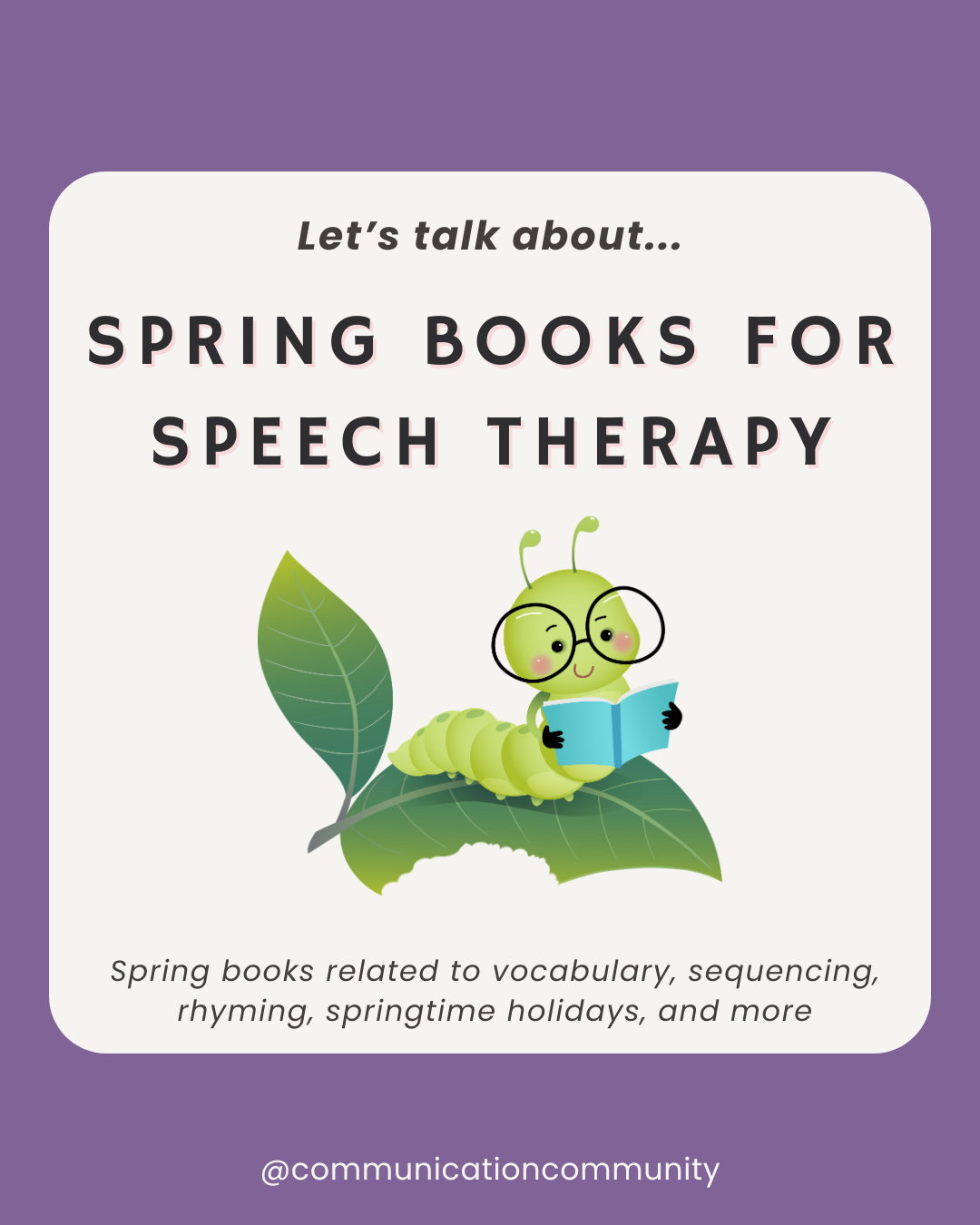Our comprehensive goal banks for school-aged language, AAC, Early Intervention & preschool, and fluency are available on our site or Teachers Pay Teachers store!
Save time creating goals with over THOUSANDS of possible goal combinations. Select your own combination of DO + CONDITION + CRITERION (and consistency) statements to develop personalized and measurable goals for your caseload.

What is expressive language?
Expressive language is the use of language, whereas receptive language is the understanding of language. There are five domains of language, including phonology, morphology, syntax, semantics and pragmatics. When developing expressive language goals, examining each of these domains is important so that the specific areas of need are targeted. For example, if an individual has adequate syntactical skills when using language, but does not have adequate semantic skills, goals should focus on semantics.
Who needs expressive language goals?
Expressive language goals are developed once it has been determined that an individual qualifies for speech-language intervention. This is done through a formal evaluation by a speech-language pathologist (SLP), and includes formal and informal assessments. Expressive language areas may include the use of developmentally-appropriate vocabulary, grammar, morphology, and more. Some individuals who have expressive language goals are children with language delays and individuals who have deficits in language due to a brain injury or a stroke.
What if someone uses sign language or an AAC system?
Individuals may use multiple types of communication modalities when expressing language, including speaking, sign language, or AAC. Many individuals use multiple communication modalities, such as speaking and AAC. When developing expressive language goals, consider what types of communication modalities individuals will be using and include that in the goal as well.
Writing Expressive Language Goals
Below you will find our Communication Community Goal Writing Formula that we use for writing all communication goals (e.g., receptive, expressive, pragmatic, etc.).
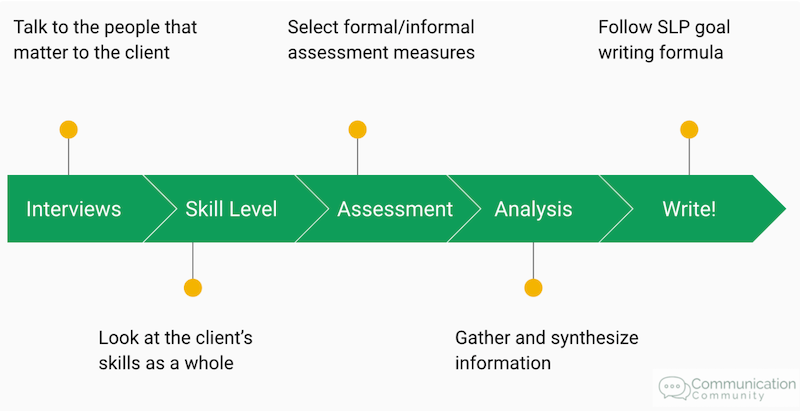
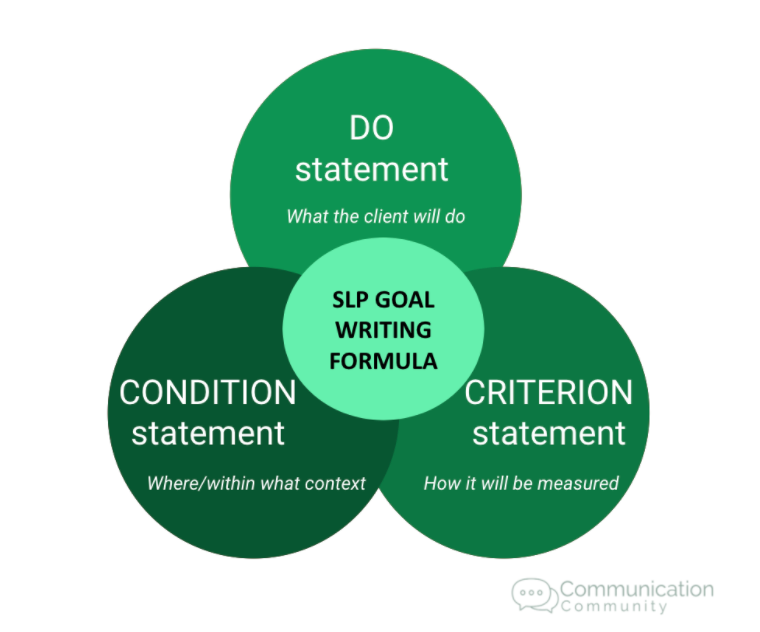
Steps for writing goals for speech and language skills (left); Communication Community goal writing formula (right)
As seen above, speech goals should be written with 3* components in mind: the DO statement, the CONDITION statement, and the CRITERION statement.
*Also commonly included is consistency (we incorporate this!). Aka does the individual have to meet a specific criterion more than once? A common example of this may include across 3 consecutive sessions. This is usually something understood by the therapy organization/service provider and is sometimes/sometimes not included in the written goal itself. This is to ensure that the skill has been generalized and provides more reliable data that the skill has been properly mastered.
DO statement
What the client is actually going to DO and the specific skill they will be working towards.
Example: produce a grammatically correct simple sentence
CONDITION statement
The specific setting and/or context your client will work on this skill.
Example: during structured language activities
CRITERION statement
How the client’s performance will be measured.
Example: in 9 out of 10 trials
DO + CONDITION + CRITERION
Example: [Client] will produce a grammatically correct simple sentence, during structured language activities, in 9 out of 10 trials.
There you have it! That is an example using our Goal Writing Formula containing the DO + CONDITION + CRITERION (don’t forget to think about consistency!) for an expressive language skill area.
Expressive Language Goal Bank
This goal bank includes a range of goals across phonology, morphology, syntax, and semantics. We have an entire post on pragmatic language goals as well.
You may take parts of each goal (e.g. the DO from one and the CONDITION from another) in order to create the best goals for your individual.
Phonology
-Example 1*: [Client] will verbally use accurate phonemes (e.g. /h/ in “hat”) in words and phrases, during structured language activities, in 4/ 5 opportunities.
*note this is not due to the client’s inability to produce specific phonemes, which would be considered an articulation or phonological disorder. This refers to understanding that the /h/ sound is significant to the meaning of the word “hat.”
-Example 2: [Client] will accurately fingerspell functional words (e.g. their name), when completing classroom tasks, with 80% accuracy across 2 consecutive sessions.
Morphology
-Example 1: [Client] will use the bound morpheme -s to express plurality, verbally and in writing, when completing grade-level assignments, in 8/10 opportunities.
-Example 2: [Client] will accurately use regular past tense using multimodal communication (signs, AAC, words), in small group sessions, with 90% accuracy, in 2 out of 3 sessions.
Syntax (grammar)
-Example 1: [Client] will produce simple sentences containing a noun + verb (e.g. The boy eats) using multimodal communication, during structured and unstructured language activities, in 9/10 opportunities, across 3 consecutive sessions.
-Example 2: [Client] will verbally answer simple wh- questions (who, what, where, when, why, how) using grammatically correct simple and compound sentences, during structured tasks, in 8/10 opportunities.
-Example 3: [Client] will produce simple sentences using irregular past verb tenses (went, was, knew, have, etc) using multimodal communication, during group activities, in 9/ 10 opportunities.
-Example 4: [Client] will write compound sentences using coordinating conjunctions (for, and, nor, but, or, yet, so), during structured language tasks, with 75% accuracy in three out of four sessions.
-Example 5: [Client] will write complex sentences using one independent clause and at least one dependent clause, as a response to a question or prompt, with 80% accuracy.
-Example 6: [Client] will use multimodal communication to produce simple sentences with a present verb tense, during small group sessions, in 4/ 5 opportunities.
-Example 7: [Client] will use multimodal communication to produce compound and complex sentences, during classroom and social settings, in 9/ 10 trials.
Semantics (vocabulary)
-Example 1: [Client] will use multimodal communication to produce figurative language (similes, metaphors, hyperboles, personifications, etc), during structured language activities, in 7/ 10 opportunities.
-Example 2: [Client] will accurately use taught vocabulary words, during structured language activities, with 90% accuracy.
-Example 3: [Client] will provide a synonym or antonym for a presented word, during structured language tasks, in 8/ 10 opportunities.
Combination
Many expressive language domains overlap, and many individuals with expressive language difficulties require intervention in more than one domain. Additionally, higher-level metacognitive skills related to expressive language may require intervention for achievement. Below are some goals to reflect skills in multiple domains and metacognitive skills.
-Example 1: [Client] will produce 1-2 sentences verbal narratives about stories, passages, or videos using correct morphology, grammar, and vocabulary, during small group sessions, with 80% accuracy.
-Example 2: [Client] will use multimodal communication to compare and contrast elements of stories, passages, or videos using simple and compound sentences with relevant vocabulary, during structured language activities, with 90% accuracy across 2 consecutive sessions.
-Example 3: [Client] will use metacognitive strategies (e.g. planning tasks, using graphic organizers) to produce age-appropriate written work, in academic assignments, in 4 / 5 opportunities.
-Example 4: [Client] will produce 1-2 paragraph written narratives about stories, passages, or videos using correct morphology, grammar, and vocabulary, in academic assignments or structured language tasks, with 80% accuracy.
Looking for more? More GOALS posts:
- How to Write Pragmatic Language Goals
- How to Write Receptive Language Goals
- How to Write AAC Goals
- How to Write Play Skills Goals
- How to Write Articulation Goals
- How to write Fluency Goals (Stuttering)
- How to Write Voice Disorders Goals
- How to Write Cluttering Goals
- How to Write Phonological Awareness Goals



Using expressive language via AAC, writing, and speaking
Want to know how we prep ourselves for goal-writing (and more)?
These are some of our favorite resources for working:
- Clipboard with storage- we use ours ALL THE TIME!
- Some really nice pens - the feel of a pen that writes so well...priceless.
- Blue light glasses- for when excessive screen time is just...necessary
Happy writing!
This post contains some affiliate links and we may be (slightly) compensated if you use them, but all opinions are our own. We appreciate the support!
Citations/further resources
https://www.asha.org/practice-portal/clinical-topics/spoken-language-disorders/
https://www.asha.org/practice-portal/clinical-topics/written-language-disorders/

![How to Write Expressive Language Goals [with goal bank]](https://www.communicationcommunity.com/content/images/2024/07/How-to-Write-Expressive-Language-Goals--with-goal-bank-.png)
![How to Write Apraxia Goals [with goal bank]](https://www.communicationcommunity.com/content/images/2024/07/Apraxia-Goals--1-.png)
